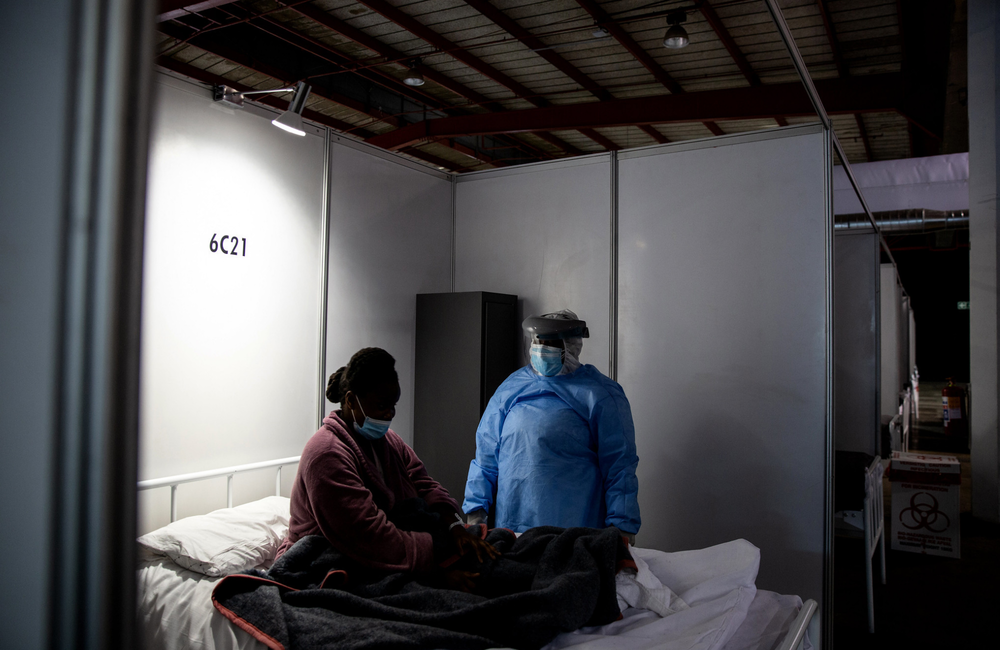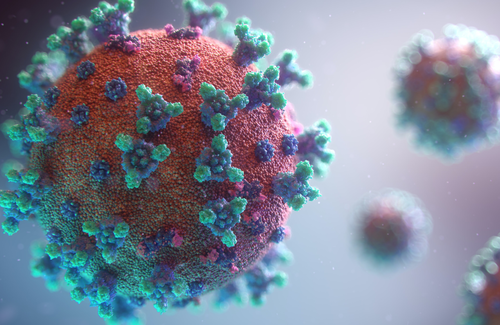
People with HIV not on antiretroviral treatment were 45% more likely to die after admission to hospital with COVID-19 compared to people taking antiretroviral treatment, a large study of in-hospital deaths from COVID-19 in South Africa has concluded.
The study also found an increased risk of death in people with HIV with CD4 counts below 200 and in people with HIV with viral loads above 1000 copies/ml, irrespective of antiretroviral treatment.
The study, published in The Lancet HIV, provides further insight into the risk of COVID-19 in people whose HIV infection is not optimally managed.
Last year, South African researchers reported that people with HIV in the Western Cape province had a higher risk of dying from COVID-19 during the first wave of the pandemic compared to others.
In July, a Spanish research group reported that a low CD4 count or unsuppressed viral load raised the risk of severe COVID-19.
Last month, US researchers reported that an unsuppressed viral load or a CD4 count below 500 increased the risk of being admitted to hospital with COVID-19.
In the study published last month in The Lancet HIV, Dr Waasila Jassat and colleagues used the South African national hospital surveillance system for COVID-19, DATCOV, to assess risk factors for in-hospital death from COVID-19 between March 2020 and March 2021. During that period, ending 27 March 2021, 219,265 people were admitted to hospital with a laboratory-confirmed SARS-CoV-2 infection and 51,037 (23.3%) died.
The median age of people admitted to hospital was 54 years, 55% were female and after adjusting for missing data, 60% were estimated to have at least one underlying condition known to raise the risk of a severe COVID-19 outcome.
Of those admitted to hospital, data on HIV status was available for just under 70% and 13,793 (9%) were known to be living with HIV. The prevalence of HIV was 20% among people admitted to public hospitals and 2% among people admitted to private hospitals.
People with HIV were more likely to have been diagnosed with cancer in the past five years and more likely to have a history of tuberculosis or current tuberculosis. They had a slightly raised risk of chronic renal disease and cardiac disease compared to the rest of those hospitalised for COVID-19 but were slightly less likely to have chronic pulmonary disease, diabetes or hypertension.
Older age was the strongest risk factor for dying from COVID-19. People aged 80 and over were around 20 times more likely to die from COVID-19 after admission to hospital compared to people under 20 years, after adjusting for other risk factors. The risk of death was five times higher in those aged 40-49 compared to the under-20 age group.
Heart disease more than doubled the risk of death (odds ratio 2.21, 95% CI 2.08-2.35, p<0.0001) and was a far stronger risk factor than other underlying conditions in this population. In comparison, diabetes raised the risk of death by 40% (OR 1.40) and high blood pressure raised it by 7% (OR 1.07).
Location within South Africa affected the risk of death. Compared to people admitted to hospitals in the Western Cape, those admitted to hospital with COVID-19 in Eastern Cape or Mpumalanga provinces were more than twice as likely to die in hospital.
Race or ethnicity strongly influenced the risk of death. Black people were almost nine times more likely to die after admission to hospital than White people (aOR 8.87, 95% CI 6.80-11.58, p<0.0001), whereas people of Indian ethnicity were 46% less likely to die compared to White people (aOR 0.54, 95% CI 0.35-0.86). The study investigators say that the stark disparity in death rates may be explained by a higher burden of underlying health conditions and infections in Black people, as well as poverty.
After adjusting for age, sex, race or ethnicity, health sector, province, month of admission, non-communicable diseases and past or current TB, people living with HIV had a 34% higher risk of dying from COVID-19 (odds ratio 1.34, 95% CI 1.27-1.43, p<0.0001).
Risk factors in people with HIV
Information on antiretroviral treatment status were available for 58% of people with HIV. Those not on antiretroviral treatment (8% of this group) were 45% more likely to die after admission to hospital than people with HIV on antiretroviral treatment, after adjusting for the same risk factors as in the whole-population analysis.
"The findings reinforce the importance of prioritising people with HIV for vaccination."
Information on recent CD4 count was available for 20% of people with HIV, as CD4 count is no longer routinely measured in South Africa. Of these, 39% had a CD4 count below 200. People with HIV with CD4 counts below 200 were more than twice as likely to die after being admitted to hospital with COVID-19 (aOR 2.31, 95% CI 1.82-2.93, p<0.0001). There was no significant difference in the risk of death between people with CD4 counts above 200 and HIV-negative people.
Last available viral load (measured within the previous year) was available for 12% of people with HIV. One in four had a viral load above 1000 copies/ml. People with unsuppressed viral load were 55% more likely to die after hospital admission compared to people with suppressed viral load (aOR 1.55, 95% CI 1.20-2.01, p=0.0029).
People with a history of tuberculosis or current tuberculosis also had a raised risk of death; current TB raised the risk of death by 42% compared to no history of TB (aOR 1.42, 95% CI 1.22-1.64, p<0.0001). The study authors point out that like HIV, tuberculosis alters T-cell function that is essential for infectious disease response.
The study authors say that their findings, drawn from an exceptionally large and comprehensive dataset that included all hospitals in South Africa, confirms that people with HIV or tuberculosis have a modestly increased risk of death after admission to hospital with COVID-19.
In an accompanying editorial comment, Professor Shabir Madhi and Dr Jeremy Nel of the University of Witwatersrand note that the HIV prevalence in public hospitals (20.4%) was similar to the population prevalence (19%), suggesting that HIV is not a risk factor for hospitalisation with COVID-19.
People with HIV who were immunosuppressed, not on treatment or not virally suppressed had a higher risk of death than other people with HIV, emphasising the importance of intensified efforts to link them to care, ensure antiretroviral therapy initiation, retention in care and viral suppression. The study authors say that their findings also reinforce the importance of prioritising people with HIV for vaccination.
Jassat W et al. Risk factors for COVID-19-related in-hospital mortality in a high HIV and tuberculosis prevalence setting in South Africa: a cohort study. Lancet HIV, published online, 4 August 2021.
DOI: https://doi.org/10.1016/S2352-3018(21)00151-X
Madhi S, Nel J. Epidemiology of severe COVID-19 from South Africa. Lancet HIV, published online, 4 August 2021.
DOI: https://doi.org/10.1016/S2352-3018(21)00183-1
Full image credit: IMF Photo/James Oatway. Available at www.flickr.com/photos/imfphoto/51062946466 under Creative Commons licence CC BY-NC-ND 2.0.

